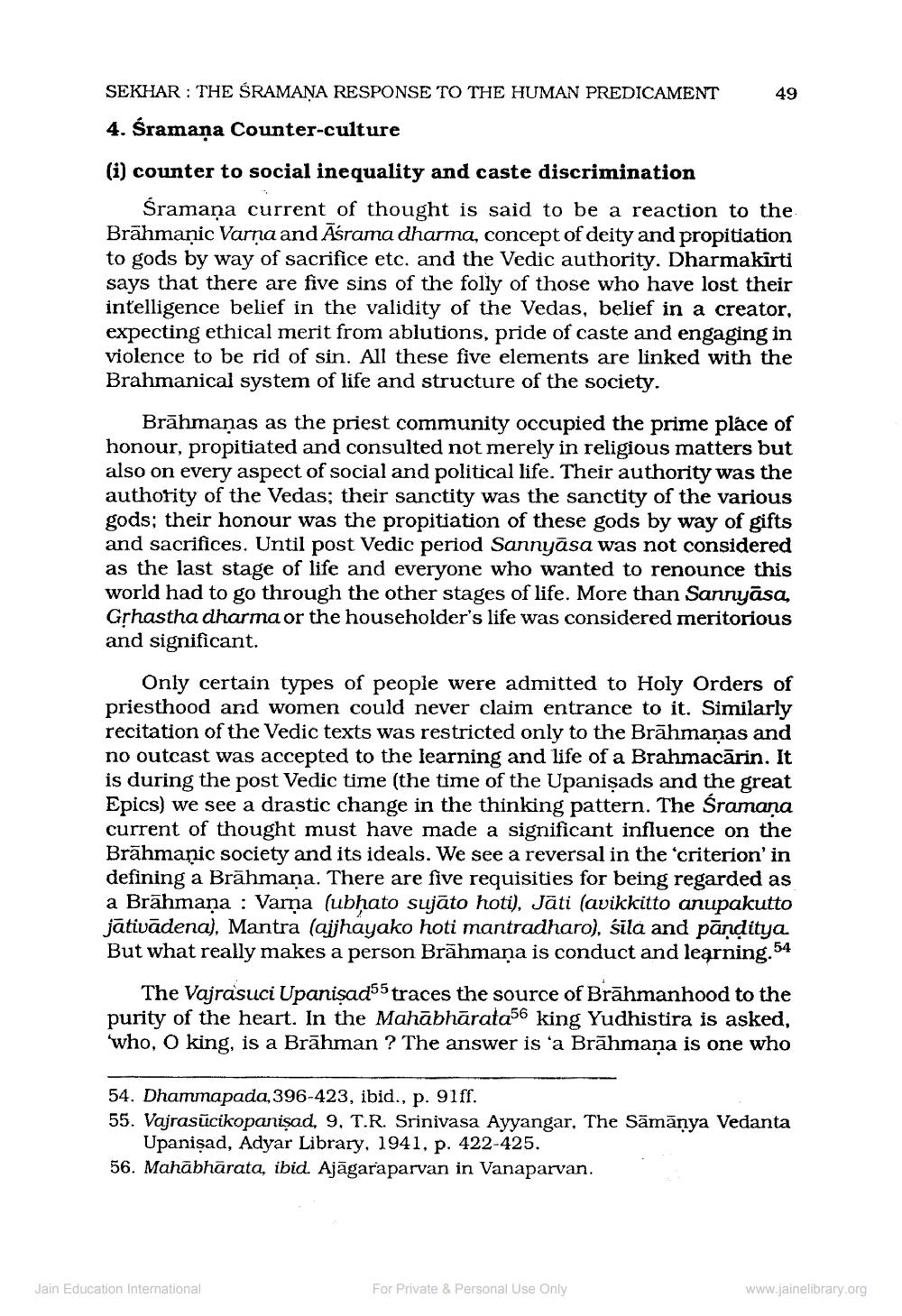________________
SEKHAR : THE ŚRAMANA RESPONSE TO THE HUMAN PREDICAMENT
49
4. Śramaņa Counter-culture (i) counter to social inequality and caste discrimination
Śramana current of thought is said to be a reaction to the Brāhmanic Varna and Aśrama dharma, concept of deity and propitiation to gods by way of sacrifice etc. and the Vedic authority. Dharmakirti says that there are five sins of the folly of those who have lost their intelligence belief in the validity of the Vedas, belief in a creator, expecting ethical merit from ablutions, pride of caste and engaging in violence to be rid of sin. All these five elements are linked with the Brahmanical system of life and structure of the society.
Brāhmanas as the priest community occupied the prime place of honour, propitiated and consulted not merely in religious matters but also on every aspect of social and political life. Their authority was the authority of the Vedas; their sanctity was the sanctity of the various gods; their honour was the propitiation of these gods by way of gifts and sacrifices. Until post Vedic period Sannyāsa was not considered as the last stage of life and everyone who wanted to renounce this world had to go through the other stages of life. More than Sannyāsa, GȚhastha dharma or the householder's life was considered meritorious and significant.
Only certain types of people were admitted to Holy Orders of priesthood and women could never claim entrance to it. Similarly recitation of the Vedic texts was restricted only to the Brāhmanas and no outcast was accepted to the learning and life of a Brahmacärin. It is during the post Vedic time (the time of the Upanişads and the great Epics) we see a drastic change in the thinking pattern. The Sramana current of thought must have made a significant influence on the Brāhmaṇic society and its ideals. We see a reversal in the criterion' in defining a Brāhmana. There are five requisities for being regarded as a Brāhmana : Varņa (ubħato sujāto hoti), Jati (avikkitto anupakutto jātivādena), Mantra (ajjhayako hoti mantradharo), sila and pāņditya. But what really makes a person Brahmana is conduct and learning. 54
The Vajrasuci Upanisad55 traces the source of Brāhmanhood to the purity of the heart. In the Mahābhārata56 king Yudhistira is asked, who, O king, is a Brāhman ? The answer is 'a Brāhmaṇa is one who
54. Dhammapada, 396-423, ibid., p. 91ff. 55. Vajrasūcikopanişad, 9. T.R. Srinivasa Ayyangar, The Sāmānya Vedanta
Upanişad, Adyar Library, 1941, p. 422-425. 56. Mahābhārata, ibid. Ajāgaraparvan in Vanaparvan.
Jain Education International
For Private & Personal Use Only
www.jainelibrary.org




